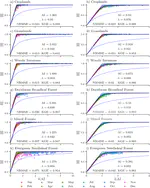Our research group is focused on the analyses, study, and development of new models and frameworks that contribute to the pool of earth system modeling. A subtle understanding of water cycle components at variable temporal and spatial scales leads to a better representation of the watershed process in coupled climate and earth system models (ESM).
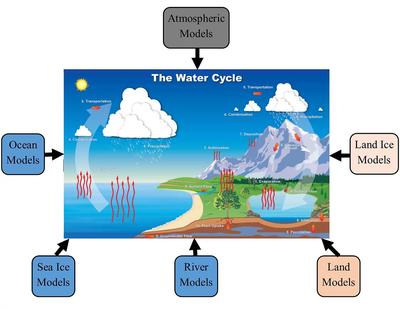
A realistic runoff routing model captures temporal and spatial variability of streamflow [for example, Model for Scale Adaptive River Transport (MOSART; Li et al., 2013)] which affects water balance and other land processes in ESM. A dynamic and optimal reservoir operation rule that considers uncertainties can address the non-stationarity which arises from climate change. Similarly, reservoirs’ water management has a direct impact on streamflow and its temperature (Li et al., 2015). This prompts a further understanding of reservoirs, in a stratified form, to analyze the extent of their impact on stream temperature.
Physical and virtual water transfer can be analyzed through a global water-food-energy nexus study. As the Spatio-temporal distribution of water changes, it is important to look at global surface water quality and quantity by employing global river routing and stream temperature models.
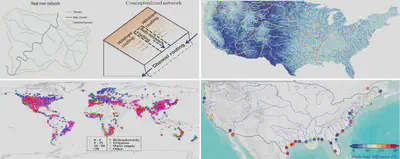
Models and Datasets
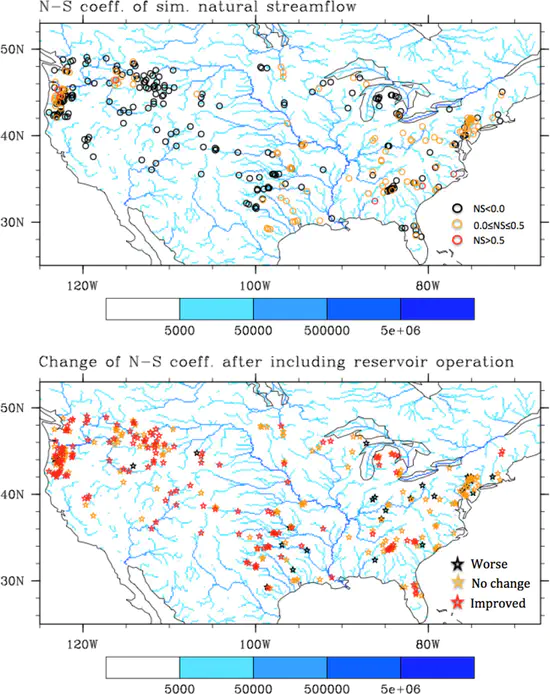
Model for Scale Adaptive River Transport (MOSART)
A new physically based runoff routing model applicable across local, regional, and global scales.
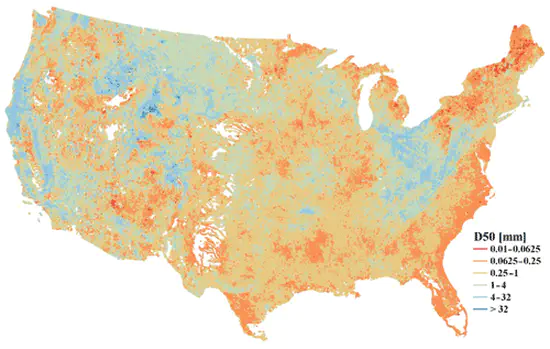
National map of median bed-material sediment particle size
Map of D50 over the contiguous US in a vector format that corresponds to approximately 2.7 million river segments.


